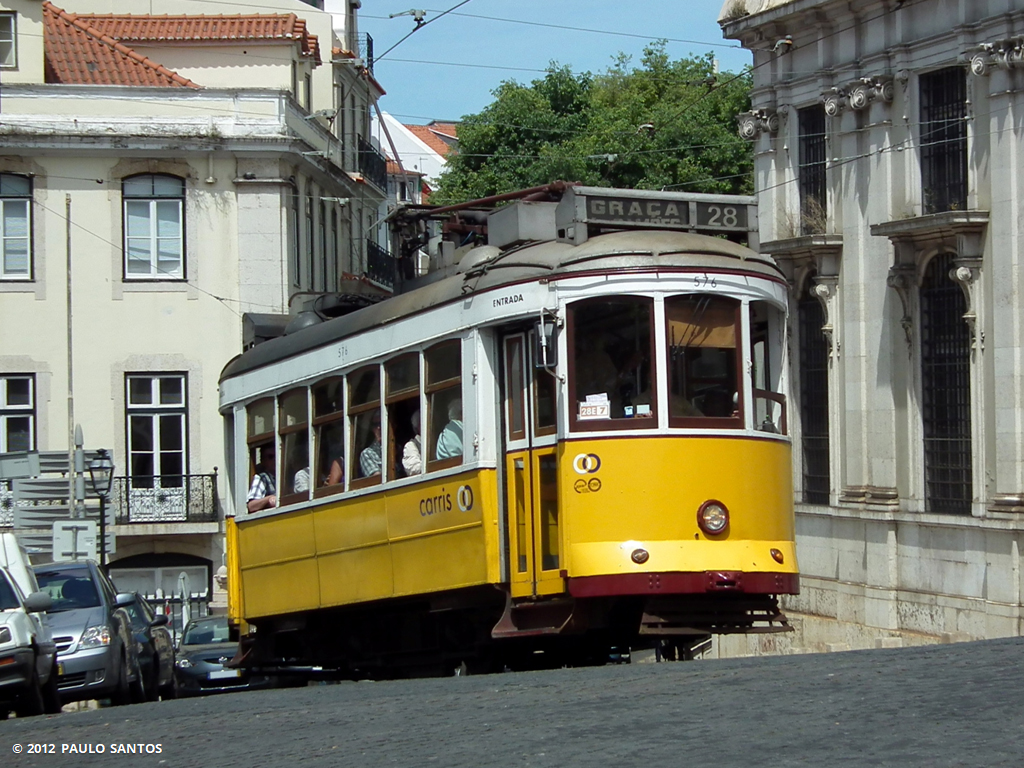Carris 576 – Carris Remodelado

Streetcar operated by Carris seen at Largo da Sé, Lisboa , in June 2012. This streetcar with fleet number 576 is a Carris Remodelado, included in a series of 45 units placed in service in 1995–96. It features a historic wooden body combined with a modern "truck". With an overall length of 27.5 ft, it can accommodate 20 seated passengers and 38 standees (20+38+1). Reversible seats. Unidirectional operation. Four doors, only those on the right are used in service, no steps on the left. Front entrance. Fed via Schunk pantograph or trolley pole by 600 V DC, this streetcar uses two 50 kW (68 hp) Škoda ALS 2840 IN traction motors. It has two Kiepe controllers, a NF 51 at the front and a RSH 201 at the rear for moving the car backwards. Gauge is 2 ft 11 7⁄16 in. Top speed is 31 mph. Everyday challenges include operation in narrow streets with curve radii of less than 32.8 ft and ascents of up to 14.5%. Established in 1872, Carris, or Companhia Carris de Ferro de Lisboa , opera



